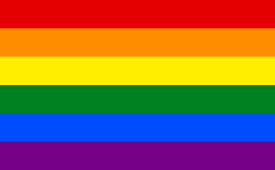Same-sex marriage in New Brunswick
| Legal |
|---|
|
Reference Re Same-Sex Marriage Civil Marriage Act |
| Parliament |
|
38th House · 38th Senate 39th House · 39th Senate |
| Same-sex marriage by province |
| Related |
|
Civil unions in Quebec Adult interdependent relationship in Alberta Domestic partnership in Nova Scotia Common-law relationships in Manitoba |
Same-sex marriage is legal in New Brunswick. The Canadian province began issuing marriage licences to same-sex couples on July 4, 2005, pursuant to a June 23 court ruling.[1]
Background
Following a number of court rulings in other provinces and territories recognizing the right of same-sex couples to marry, New Brunswick's Justice Minister Brad Green announced in September 2004 that the Government of New Brunswick would not follow in the footsteps of Nova Scotia in issuing marriage licenses to same-sex couples. He said that the definition is a federal matter, and the province would recognize only marriages between a man and a woman until the Federal Government came up with another definition (as it finally did with the Civil Marriage Act in 2005).
However, Premier Bernard Lord indicated that if and when the Federal Government passes such legislation, his Government will comply with it. He also indicated he would comply with a court ruling, even though he was personally opposed to same-sex marriage.
Court ruling
In April 2005, four same-sex couples filed a court challenge against the Government's policy against issuing marriage licences to same-sex couples. The couples included prominent New Brunswick gay rights advocate Art Vautour-Toole and his husband Wayne Toole (who had married in Ontario), as well as Catherine Sidney and Bridget McGale and two other couples.[2]
On June 23 of that year, Judge Judy Clendenning of the Court of Queen's Bench of New Brunswick in Moncton ruled that the province's failure to issue marriage licences to same-sex couples was a violation of their Charter rights, in accordance with court rulings in other provinces.[3] She allowed a ten-day grace period to the Government, after which it had to begin issuing same-sex marriage licences. This was less than a month before Parliament made same-sex marriage legal throughout Canada.
The new licenses became available on July 4.[4]
Provincial legislation
In March 2007, the Legislative Assembly of New Brunswick made amendments to the Family Services Act by allowing joint adoption by "common-law partners", including same-sex couples thus allowing same-sex couples to adopt children.[5] The amendments took effect on 1 February 2008.[6]
In December 2008, amendments to the Marriage Act and numerous other acts were made by striking out "husband and wife" and substituting "spouses".[7]
References
- ↑ "Same-sex marriage in the New Brunswick, Canada". Kingston: Ontario Consultants on Religious Tolerance. 29 April 2005. Retrieved 10 March 2011.
- ↑ "N.B. same-sex couples seek right to marry". Canadian Broadcasting Corporation. 25 April 2005. Retrieved 10 March 2011.
- ↑ "Court legalizes gay marriage in New Brunswick". CTV. 24 June 2005. Archived from the original on 10 March 2011. Retrieved 10 March 2011.
- ↑ "All systems go for same-sex marriage in New Brunswick". Canadian Broadcasting Corporation. 4 July 2005. Archived from the original on 10 March 2011. Retrieved 10 March 2011.
- ↑ Sexual Orientation and Legal Rights
- ↑ Family Services Act, SNB 1980, c F-2.2
- ↑ "Modernization of Benefits and Obligations Act" (PDF). Government of New Brunswick. Retrieved February 13, 2016.
External links
| Wikinews has related news: Court legalizes same-sex marriage in New Brunswick |

